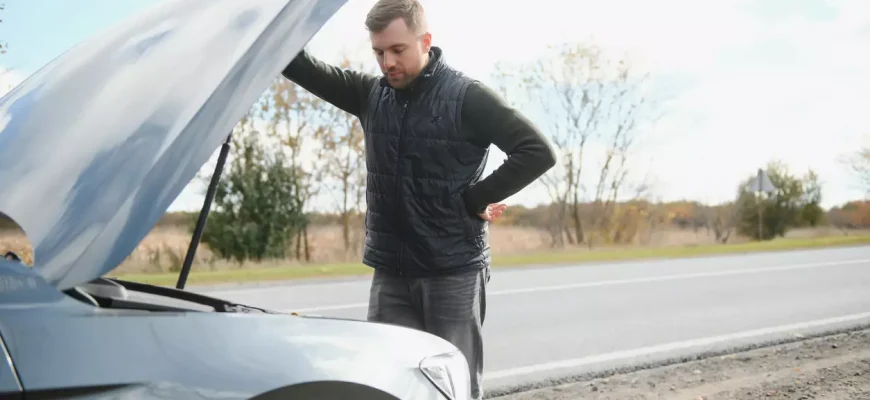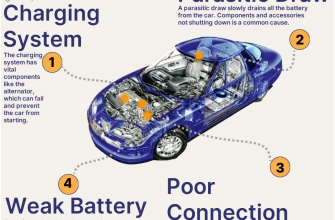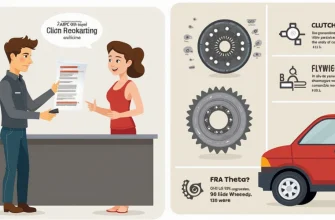A car cutting off unexpectedly can be frightening. It’s crucial to understand potential causes and what to do.
Common Culprits
- Fuel System Issues: Fuel pump failure, clogged fuel filter, or empty tank.
- Electrical Problems: Faulty alternator, bad battery, or wiring issues.
- Ignition System: Failing ignition coil or distributor problems.
- Engine Overheating: Lack of coolant or radiator issues.
- Sensor Malfunctions: Crankshaft or camshaft position sensors failing.
- Computer Problems: ECU malfunctions.
Roadside Steps
- Safety First: Pull over to a safe location, if possible. Turn on hazard lights.
- Assess the Situation: Try restarting the car. Listen for any unusual noises.
- Check the Basics: Fuel gauge, visible leaks.
- Call for Help: Roadside assistance or a tow truck. Avoid attempting complex repairs yourself on the roadside.
- Stay Visible: If you must exit the vehicle, wear reflective clothing and stay away from traffic.
Prevention
Regular maintenance is key. This includes fuel filter replacement, battery checks, and addressing any warning lights promptly.
Important Considerations
Diagnosing the exact cause often requires a qualified mechanic. Provide them with as much detail as possible about the incident.
Beyond the Immediate Stop: What to Expect After a Cut Off
Once your vehicle is safely off the road and assistance is on the way, there are a few things you should consider to ensure a smooth resolution to the situation:
Document Everything
- Take Pictures/Videos: Document the location of your vehicle, any visible damage (if applicable), and the surrounding area. This can be helpful for insurance purposes, even if the “cut off” wasn’t due to another driver.
- Note the Time and Location: Record the exact time and location where the incident occurred. This information will be crucial when speaking with roadside assistance, insurance companies, or a mechanic.
- Gather Information: If another vehicle was involved (even indirectly), exchange information with the other driver(s), including names, insurance details, and contact information.
Dealing with the Repair Shop
- Choose a Reputable Mechanic: Select a mechanic you trust or one recommended by your insurance company or roadside assistance provider.
- Describe the Problem Clearly: Provide the mechanic with a detailed description of what happened leading up to the cut-off, including any noises, smells, or warning lights you observed.
- Get a Written Estimate: Before any repairs are performed, obtain a written estimate outlining the costs of parts, labor, and any diagnostic fees.
- Ask Questions: Don’t hesitate to ask the mechanic questions about the diagnosis and the proposed repairs. Understand what’s being done and why.
Insurance Considerations
- Contact Your Insurance Company: Depending on the circumstances and your insurance policy, you may need to file a claim. Even if you’re unsure whether you’ll file a claim, it’s a good idea to notify your insurance company about the incident.
- Understand Your Coverage: Review your insurance policy to understand your coverage limits, deductibles, and any exclusions that may apply.
- Cooperate with the Insurance Adjuster: Provide the insurance adjuster with all the necessary information and documentation they request.
Advanced Driver Assistance Systems (ADAS) and Preventing Cut-Offs
Many modern vehicles are equipped with Advanced Driver Assistance Systems (ADAS) designed to help prevent accidents, including those caused by unexpected cut-offs. These systems may include:
- Blind Spot Monitoring: Alerts you to vehicles in your blind spots, helping you avoid merging into them.
- Lane Departure Warning: Warns you if you start to drift out of your lane without signaling.
- Automatic Emergency Braking (AEB): Can automatically apply the brakes if it detects an imminent collision.
- Adaptive Cruise Control (ACC): Maintains a safe following distance from the vehicle ahead, automatically adjusting your speed.
While these systems can be helpful, it’s important to remember that they are not a substitute for attentive driving. Always remain vigilant and be prepared to take control of the vehicle if necessary. Familiarize yourself with your vehicle’s ADAS features and understand their limitations.
Final Thoughts
A car cutting off is a stressful situation. By understanding the potential causes, knowing what to do at the roadside, and taking steps to prevent it from happening, you can increase your safety and peace of mind on the road.










Very practical and informative! I feel much better prepared now in case this ever happens to me. The list of common culprits is very detailed.
Documenting everything after the incident is a great tip I hadn’t considered before. Taking pictures and noting the time/location could be really helpful for insurance. Thanks!
The section on prevention is spot on. Regular maintenance is so important to avoid these kinds of issues in the first place. Thanks for the reminder!
Excellent article! Clear, concise, and covers all the essential points. The advice to call for help rather than attempting complex repairs on the roadside is wise.
I appreciate the emphasis on safety first! It’s easy to panic in these situations, but pulling over safely and turning on hazard lights is paramount. Great advice.
This is a really helpful overview of what to do when your car suddenly cuts off. The breakdown of potential causes is especially useful for understanding the problem.